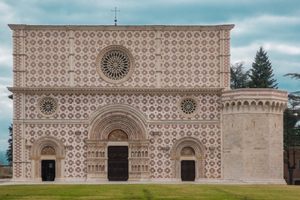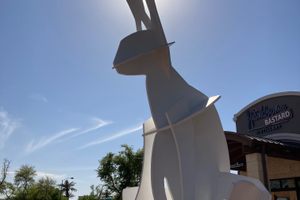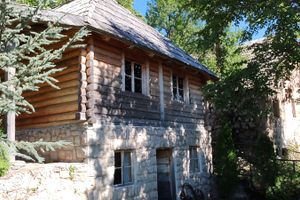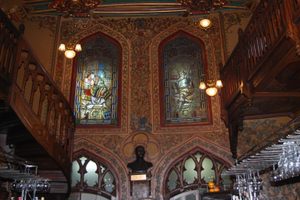https://www.atlasobscura.com/places/fantast-castle
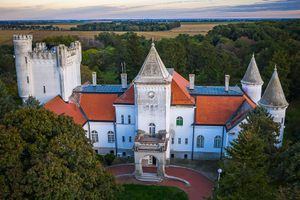
The Serbian wine-making province of Vojvodina has been home to many wealthy people, who have built magnificent palaces and estates. Over 100 years ago, on his vast estate of over 2,600 acres, one such man created a world of his own — a fairytale realm known as Fantast Castle or Dunđerski Palace.
An avid horse collector, Bogdan Dunđerski named the castle after Fantast, the stunning horse of a Belgrade doctor. Having never married nor had any children, Dunđerski was a renowned Bohemian his whole life, and his great passions were horsemanship, being among beautiful women, and fine wine. Fantast Castle features a stud farm for racehorses that is still active today, as well as a neo-Byzantine Serbian Orthodox Church and chapel.
Dunđerski first began building his dream castle at the age of 57, inspired by his travels across Europe, where he studied many European grand castles, particularly pseudo-Romantic “fantasy castles” he had seen in Vienna and Budapest. For him, mystery was not just a theme, but a guiding principle in the building process. He followed this vision so closely that no original architectural plans for the castle have ever been found. Some say he built the Disney-like castle out of spite, to prove that he had not gone bankrupt.
To protect the secrets of his masterpiece, Dunđerski did not hire local workers, and instead sourced skilled craftsmen from Czechia. Their limited connection to the region ensured that evidence of the Fantast Castle remained untraceable. Once the complex was completed, the craftsmen returned home, taking the knowledge with them. Whispers of massive shipments of high-quality Slavonian oak arriving and vanishing overnight were the gossip of town. It is believed that the wood was used to line secret passageways connecting the castle to the stables. As for hidden chambers, at least two are said to exist within the estate.
Adjacent to the castle, a chapel was constructed in the neo-Byzantine style, dedicated to St. George. Its iconostasis was painted by Uroš Predić, one of Serbia’s most celebrated artists and a close friend of Dunđerski. Predić also created three mosaics on the portal, and a depiction of the Last Supper, completing them over two years. At Dunđerski’s request, the Virgin Mary in one of the paintings was modeled after a woman named Mara Dinjaški Đalinac, the wife of the estate's blacksmith and an object of Dunđerski’s affections.
The chapel, where Dunđerski is buried, is steeped in the same mystique that shrouds the rest of the estate. Visitors who come on the Feast of the Transfiguration often report a palpable sense of the otherworldly. One particularly curious feature is the icon of Stefan the First-Crowned, which bears a silver imprint of lips in its lower right corner. According to local myth, this mark mysteriously appears and fades, and is most visible at midnight on Transfiguration Day, when Dunđerski’s spirit is said to rise and roam his beloved Fantast Castle.
https://www.atlasobscura.com/places/fantast-castle


